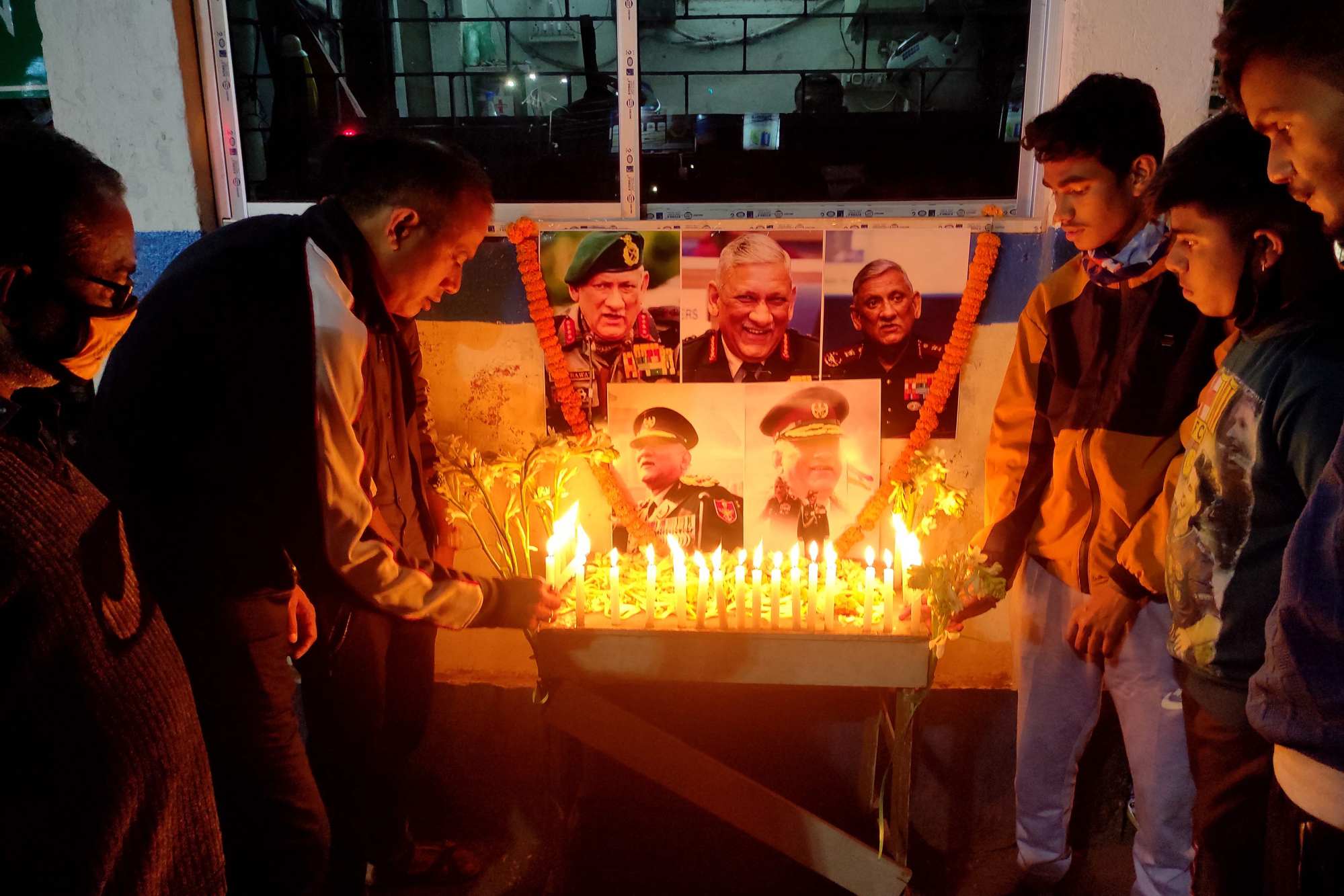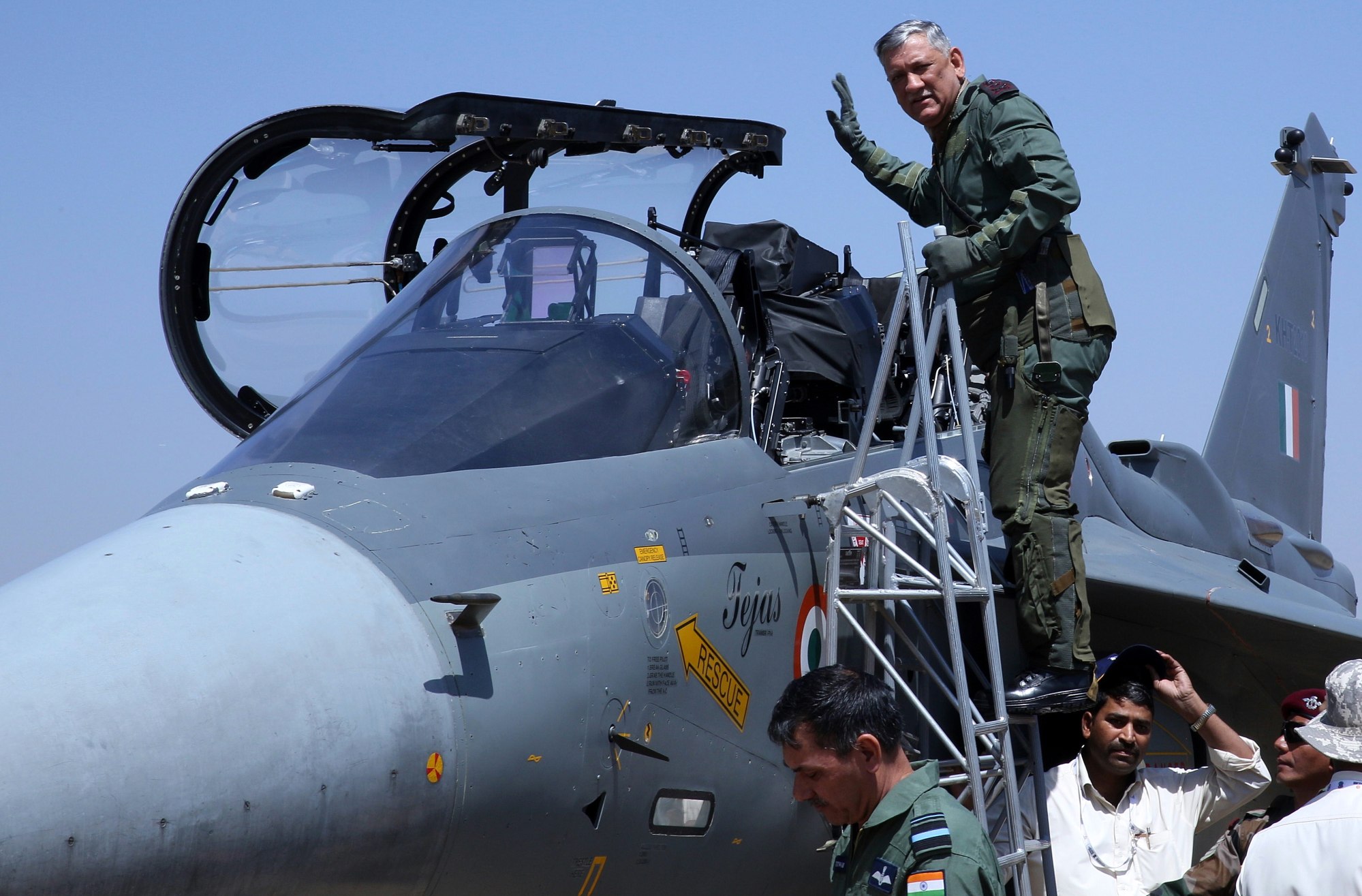
As India mourns the death of top general Bipin Rawat, what does his loss mean for its military?
- The country’s most senior serving soldier was hand-picked by Modi to become his army chief before becoming the nation’s first chief of defence staff
- His fatal helicopter crash ‘couldn’t have come at a worse time’, one analyst says, amid heightened border tensions with China
Rawat’s death “couldn’t have come at a worse time”, tweeted strategic analyst and author Brahma Chellaney, as “China’s 20-month-long border aggression has resulted in a warlike situation along the Himalayan front”.
Defence Minister Rajnath Singh was the first to announce the bad news over Twitter: “Deeply anguished by the sudden demise of Chief of Defence Staff Gen Bipin Rawat, his wife and 11 other Armed Forces personnel in an extremely unfortunate helicopter accident today in Tamil Nadu. His untimely death is an irreparable loss to our Armed Forces and the country.”

Rawat was hand-picked by Modi to become his army chief in 2016, superseding another officer who many felt was better qualified. Three years later, he was chosen as the first tri-service Chief of Defence Staff, bringing for the first time the army, navy and air force under a single umbrella.
The general also shared a close working relationship with Modi’s powerful National Security Adviser (NSA) Ajit Doval. The two cooperated successfully on operations such as air force and special forces strikes into Pakistan.
During some four decades of service, Rawat commanded soldiers along the Line of Actual Control bordering China, and in Indian-administered Kashmir. In the 1980s, he led troops in skirmishes against Chinese forces.
As the tri-services Chief of Defence Staff, Rawat diligently pursued his allocated role to break up silos in the defence ministry, where civilians tend to operate distinctly and separately from the military. To do so, he was given charge of a separate wing within the ministry called the Department of Military Affairs (DMA), which is staffed by a mix of civilian and military officials.
Most Indian military experts also agreed on the need for another kind of integration – for the army, navy and air force to group themselves into tri-service combatant commands, rather than continuing as a plethora of single-service commands that function on a geographical basis – such as the army’s Northern Command, Western Air Command, Southern Naval Command.
Rawat was charged with eliminating this dysfunctional separation by regrouping the three services into integrated commands, each one controlling all the army, navy and air force units it required to execute combat operations in wartime.
As a trial measure, one integrated tri-service command was set up in the Indian Ocean: the Andaman and Nicobar Command (ANC). But that trial balloon was never extended elsewhere.
The model for geographically dispersed, integrated tri-service commands was created by the US military in its post-World War II quest for a global role. In 1947, Washington established five geographic combatant commands (such as Central Command, Africa Command and Indo-Pacific Command) that, between them, cover the globe. The US military also established four functional combatant commands, responsible variously for special operations, strategic forces, transport and cyber warfare.

In 2016, India watched as China’s People’s Liberation Army copied this model, reorganising its seven “Military Regions” and three “Navy Fleets” into five “Joint Theatre Commands”, each containing elements from all three services. China’s success in this initiative intensified the clamour among Indian military reformers to also take steps to implement joint, tri-service commands.
The announcement on Christmas Eve 2019 of the creation of the Chief of Defence Staff role charged Rawat with “facilitation of restructuring of military commands … by bringing about jointness in operations, including through establishment of joint/theatre commands”.
Rawat lost his life while on his way to give a lecture to his officers on the need, and the methodology, for integrating civil-military functioning and creating tri-service synergy through the establishment of joint theatre commands. His premature death, however, is unlikely to put the brakes on these reform measures within the Indian military.
Initial studies have already been carried out, and a degree of momentum already generated. The departure of a single functionary, howsoever central to the overall effort, is unlikely to put a stop to reform, which has created a momentum of its own.

